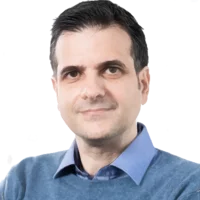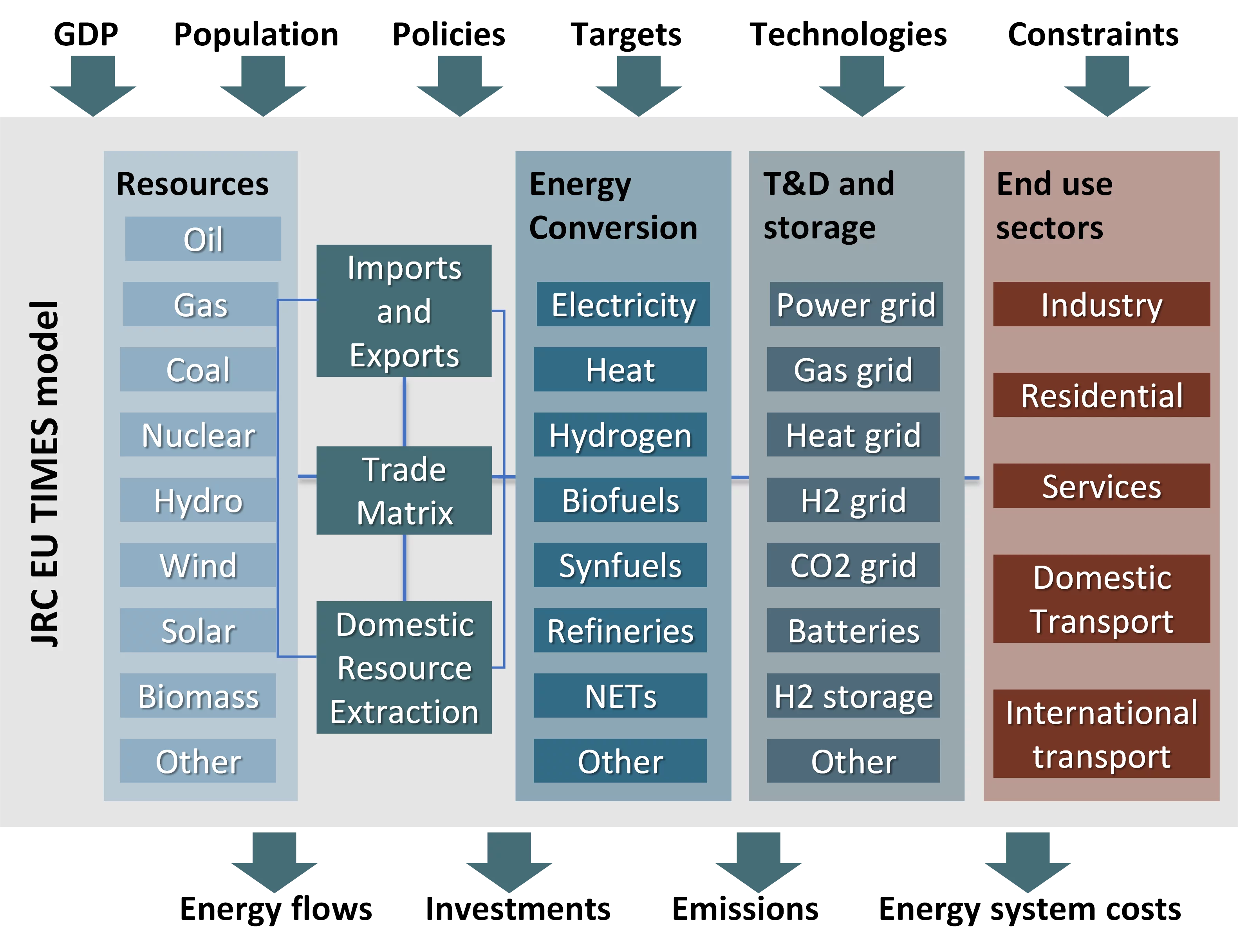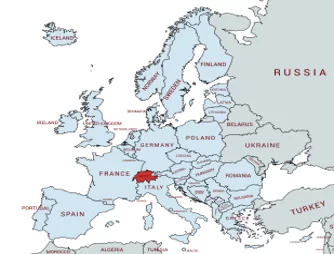JRC EU TIMES is a multiregional, multi-carrier and multi-sector energy systems model of Europe covering 36 countries.
The JRC-EU-TIMES model is an open-source energy systems mode, intiallyl developed by the Joint Research Centres of the European Commission. It is based on the TIMES energy systems model framework developed by the IEA-ETSAP It is a partial equilibrium framework representing the entire energy system of 36 European countries, including Switzerland, from an engineering techno-economic perspective, with a full range of energy processes, including exploitation, conversion, transmission, distribution, storage, and energy end-use. The model consists of the following sectors of the energy system:
- Upstream sector, including the production and extraction of resources, energy imports and exports
- Conversion sector that includes electricity and heat production, hydrogen production, production of biofuels and e-fuels
- Final energy consumption sectors, including industry, services, residential, transport and agriculture
- CO2 capture, sequestration and utilisation sectors
JRC-EU-TIMES aims to supply energy services at a minimum energy system cost by simultaneously making energy technology investments and operating decisions to reach a demand-supply equilibrium state. The optimisation considers several constraints related to policy, technology deployment, resource potential or other constraints surrounding the configuration of the future energy system. The demand-supply equilibrium found by the optimisation has the property of maximising the total surplus. The model has a long-term horizon. This analysis focuses on the developments until 2050, with reporting years 2020, 2025, 2030, 2035, 2040, 2045 and 2050. We apply a 5% social discount rate and technology-specific interest rates of up to 12%, depending on the sector and technologies.
Key outputs of the model are the annual stock and activity of supply, demand, and trade technologies, as well as the associated material and energy flow for each region and period. The model also provides operation and maintenance costs, investment costs, and prices of energy and materials commodities.
Among its unique characteristics are the endogenous trade of energy carriers such as electricity, gas, and hydrogen, the endogenous trade of carbon permits and green certificates, and a DC power flow approximation of the electricity transmission grid in Europe. It also has a detailed representation of other backbone European energy infrastructures such as storages, pipelines, and terminals. In addition, the model tracks the vintages of energy technologies, including the option for early retirement of existing capacities.
The main role of JRC-EU-TIMES in the policy cycle is anticipation, with a focus on technology policy. Technology policy analyses with JRC-EU-TIMES can complement the European Commission's reference analyses in the areas of energy, transport and climate action. The baseline scenario of JRC-EU-TIMES is always aligned to the latest EU reference scenario. A typical question that JRC-EU-TIMES can address is which technological improvements are needed to make technologies competitive under various low-carbon energy scenarios. JRC-EU-TIMES can support studies which require (1) modelling at the level of an energy system, (2) a high detail of technologies, and (3) intertemporal results on the evolution of the energy system.
The regions of the JRC EU TIMES model:
At EEG JRC-EU-TIMES is currently actively being extended and applied in various projects.
See Model documentation and publications for details


